The Cathedral at Monreale, built between 1170 and 1189, in a hilltown above Palermo, Sicily, is a masterpiece of Arab-Norman Byzantine mosaics created by craftspeople from Constantinople.
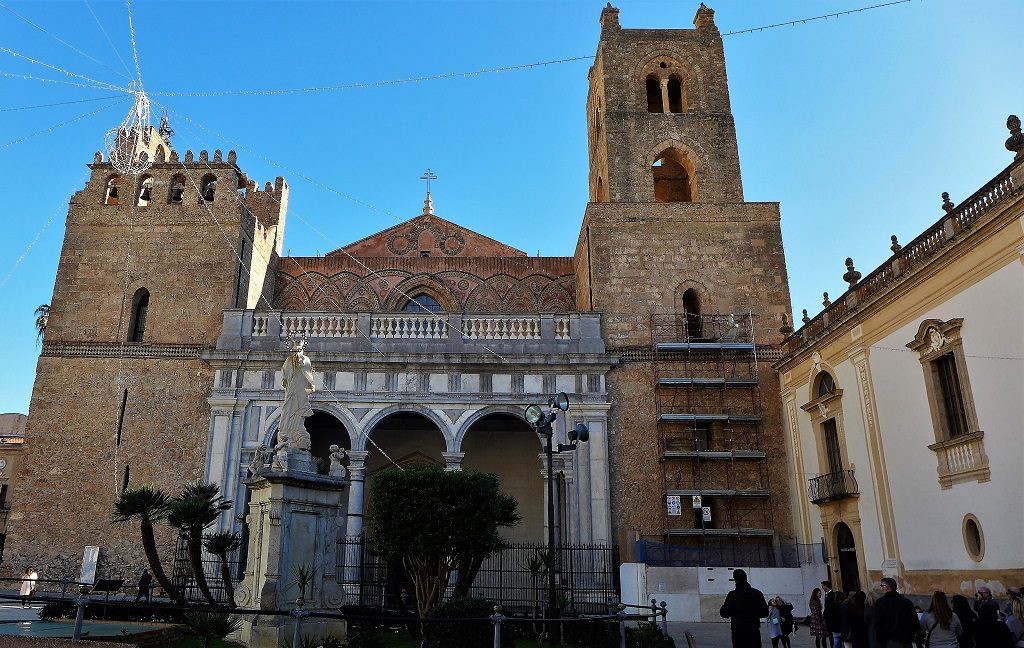

A Christian Jewel in an Arabesque Crown By a Norman King
From the top of a hill overlooking the city of Palermo and the Tyrrhenian Sea, the political and artistic statement of the Cathedral at Monreale (in Sicilian Murriali) placed the Norman Kingdom in control of the long-contested island (their rule lasted from 1130 to 1194). The term Norman (“men from the North”) applied first to the people of Scandinavia in general, and afterwards (Northmannus, Normannus, Normand) it is the name of the Viking colonists from Scandinavia who settled in Gaul and founded Normandy. From their new home in northern France they set forth on new conquests, chiefly in the British Islands and in southern Italy and Arab-controlled Sicily.
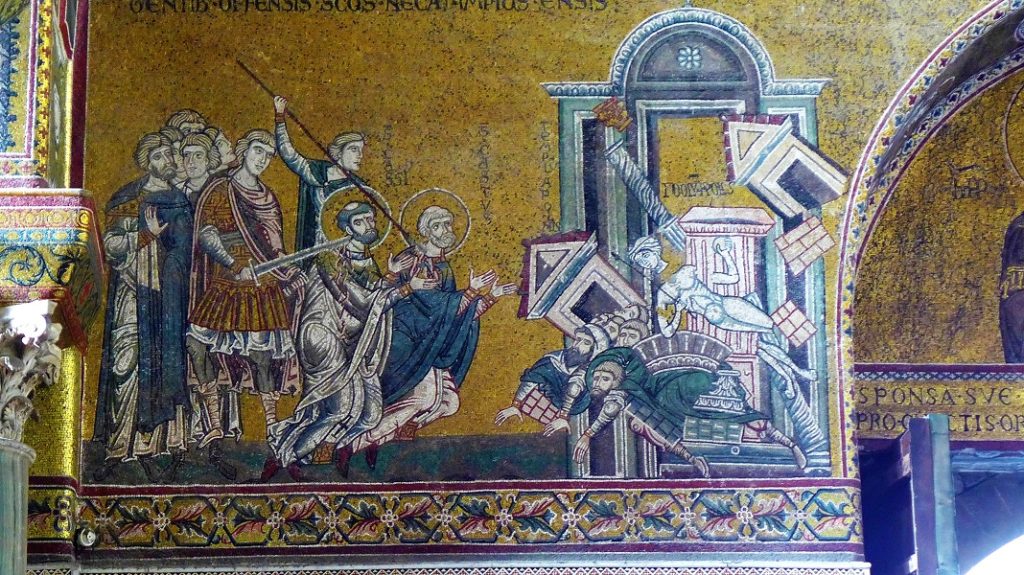

My interest in this monument is also personal: my maternal nona (we called her Nana, or grandmother), Antionette “Nancy” Palazzolo née Zucharello, lived in Monreale and had her First Communion in the Duomo in the first decade of the 20th Century, just before she emigrated to New York, then Chicago, and later settled in East Detroit. Thus, my extended family made a sort of pilgrimage this year to experience the legendary town and cathedral and pay respects to our ancestors who once operated a restaurant on one of the cobblestone streets.
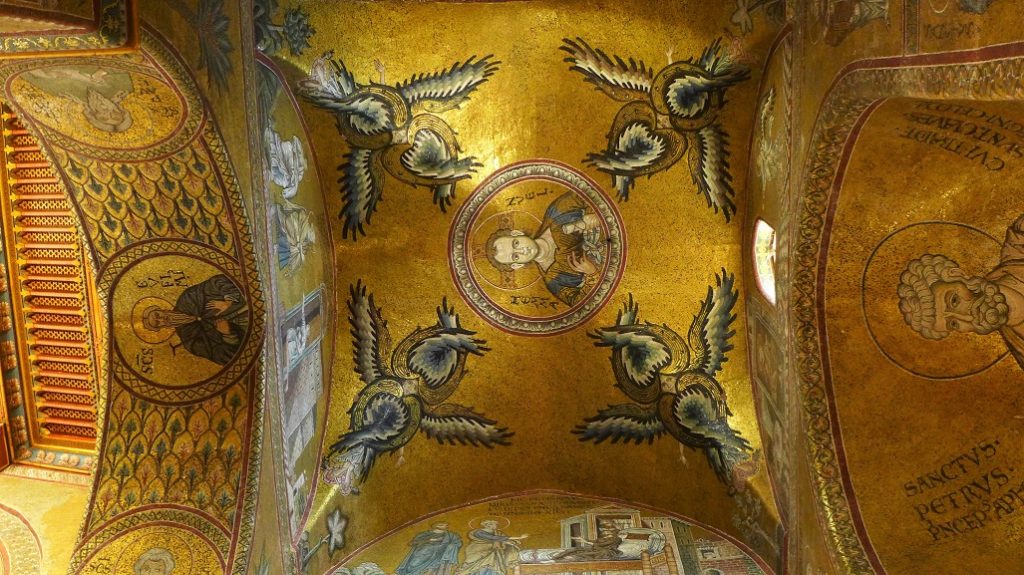

With its cycle of ground-gold mosaics and an extraordinary cloister, the Duomo di Monreale represents the largest concentration of Norman-French, Arab, and Byzantine art in one building, and is listed on UNESCO’s list of World Heritage Sites. This coupled with other culturally-synchretic monuments of the time around Palermo bear testimony to the fruitful coexistence of people of different origins and religions (Muslim, Byzantine, Latin, Jewish, Lombard, and French).
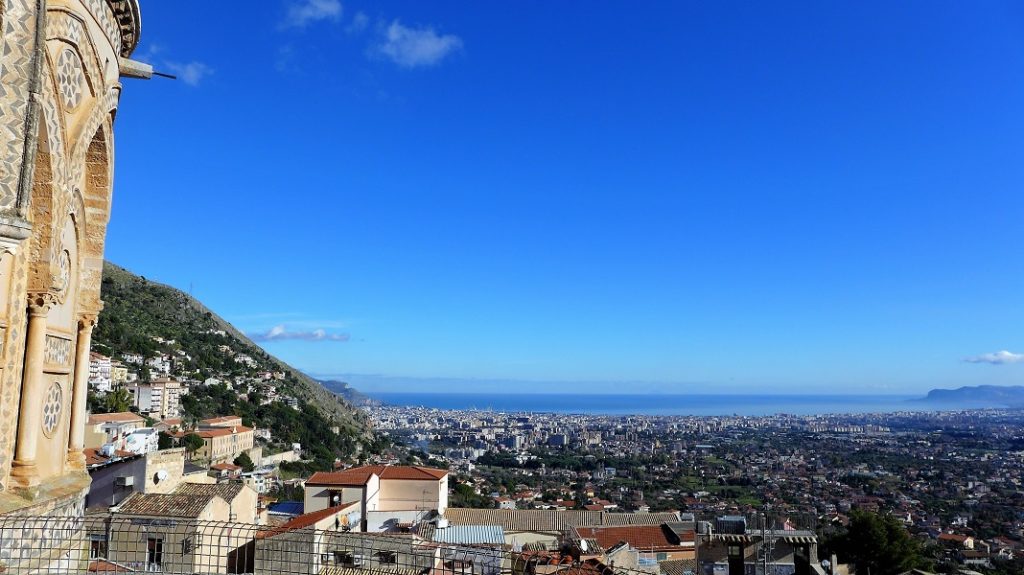

Pretensions to Royalty
The cathedral was erected by King William II (1167/71-1189) in a royal park (‘Monreale’ is a contraction of monte-reale, from the Latin Mons Regalis, literally ‘royal mountain’) on the site of an earlier Greek church. In Norman times it began as a small Arab hamlet called Ba’lat, which became a favorite hunting ground of the Hauteville monarchs. In those days deer, boar and wild cats still roamed Sicily, where there were far more forests than today, and falconry was popular among the baronage.


According to a legend, William II of Sicily fell asleep under a carob tree while hunting in the woods near Monreale. The Holy Virgin appeared to him in a dream, suggesting that he build a church here with the treasure stolen from the State by his father, William I (known as ‘The Wicked’). She pointed to the carob tree where he slept as the location of the stolen loot. After removing it, a treasure was found in its roots, whose golden coins were used to finance the construction.
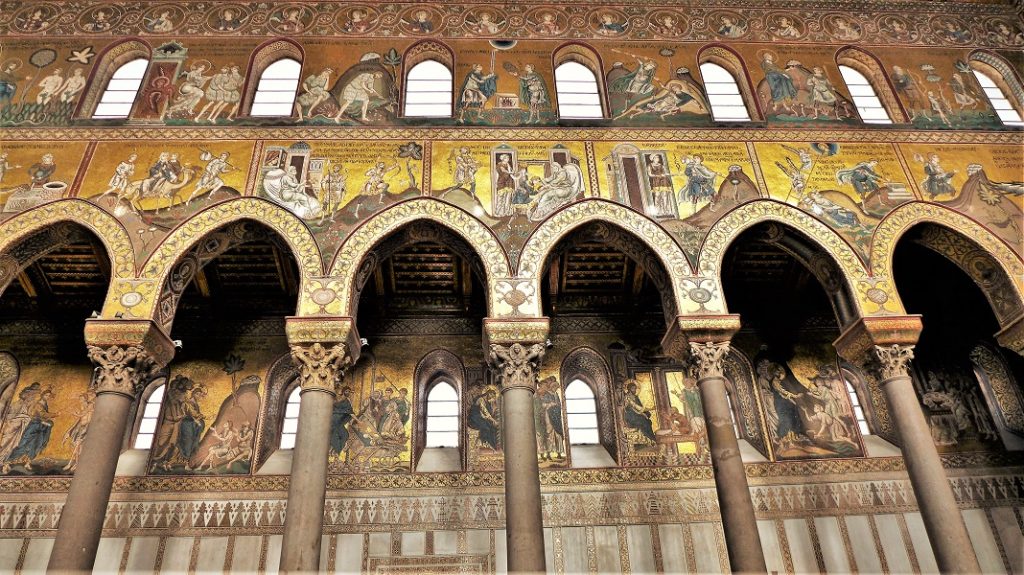
Thus, King William II set about constructing a bigger and more artistically inspired cathedral, officially called “Santa Maria la Nuova” (Saint Mary the New), notwithstanding the legend that he saw it in a dream and found the construction funds in a tree. To push back against Walter, he pursued establishment of the Roman Catholic (called the “Latin” Church at the time) as the official church of Sicily, among the Orthodox Christians, Muslims, and Jews. He appointed his own archbishop, and made his cathedral the royal pantheon. The results survive today almost exactly as built in the Twelfth Century.
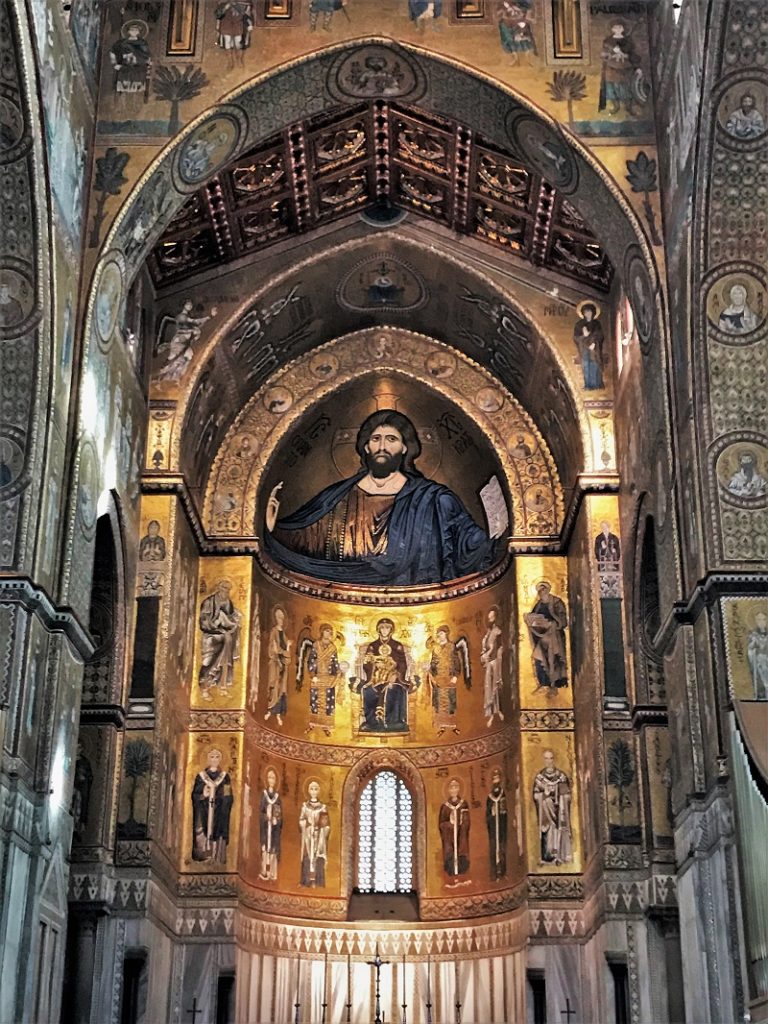

A “Good” King’s Remarkable Construction
Though William’s endeavor Latinized Sicily in the European mode, he mixed his influences unusual for a Christian monarch of the Middle Ages. Enlightened, tolerant, and appreciative of many aspects of North African and Middle Eastern culture and art, he had Muslim ministers, astrologers and doctors in his court. William further is said to have kept a harem in his palace, and to have spoken, read, and written Arabic. Interestingly, Dante places William II in Paradise of his Divine Comedy. William is also referred to in Giovanni Boccaccio‘s 14th Century Decameron (tale IV.4, where he reportedly has two children, and tale V.7). That work on the cathedral was completed before William’s death (aged just 36) in 1189 was indeed a fortunate thing, for the period of quasi-anarchy which ensued as rival claimants sought the crown did not bode well for costly construction projects.
STORY: The Underworld, Rebirth and Renewal with Ceres and Proserpina
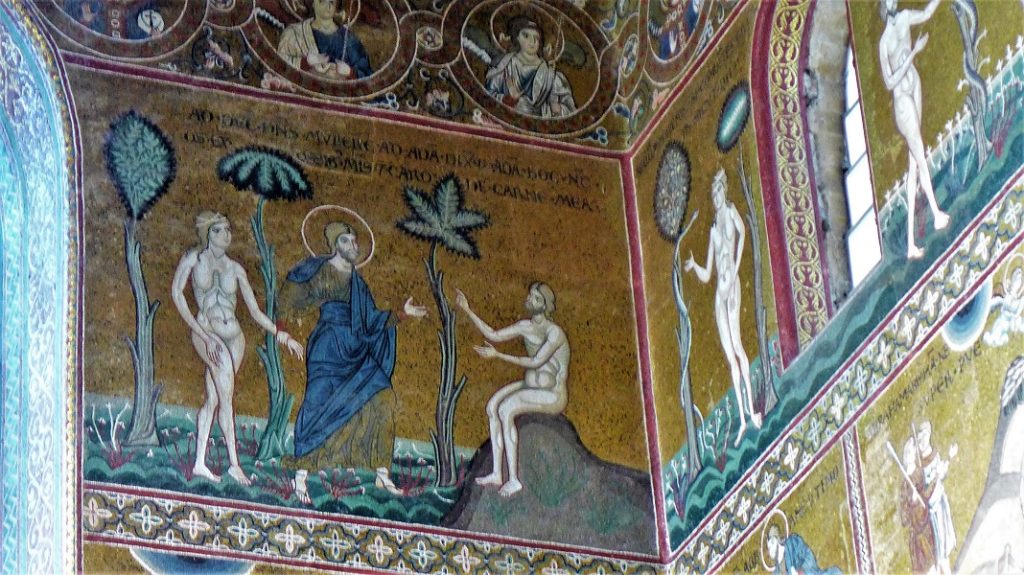

The medieval artists from Constantinople and local mosaicists were able to cover all the walls (6,340 sq. meters) following both the Old and New Testaments of the Bible. These run in four rows, with two levels on each side of the nave. The apse is dominated by an enormous portrayal of Christ Pantocrator (Almighty or All-Powerful, formed from the Greek words pan -gen. pantos- i.e. “all,” and kratos, i.e. “strength,” “might,” “power”).

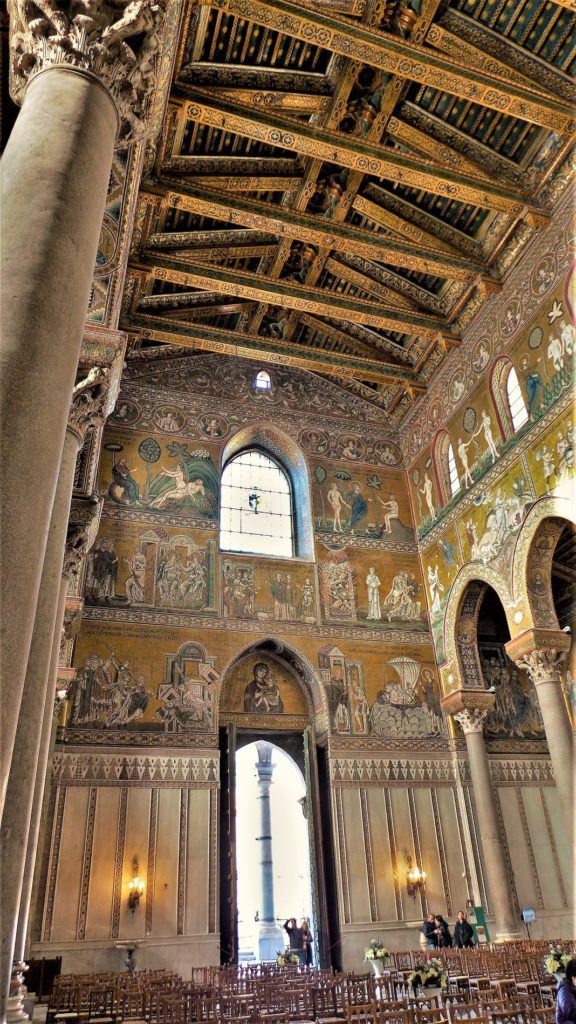
Contrasting with the rest of the medieval interior, the Cappella del Crocifisso in the north apse has been fully Baroqued. The Cappella di San Benedetto, decorated in the 16th century, contains the porphyry sarcophagus of William I (d. 1166) and marble tomb of William II (d. 1190). The beautifully painted wooden vault, with Latin inscriptions, was added in 1816-37.
The cathedral’s treasury contains an impressive collection of sacred art, including reliquaries, vestments, silverware, goldsmithery, and other ecclesiastic works of art from the Middle Ages and the Renaissance.


The lovely Benedictine cloister adjoining the south side was built at the same time as the cathedral. Every second pair of white marble columns has a vivid zig-zag mosaic pattern spiraling up the shaft. It has 228 double columns, each with Arab-style arches and different decorations influenced by Provençal, Burgundian, and Salerno medieval arts, with Romanesque figurative carvings on the columns and capitals. Mosaicwork appears on some of the columns as well. The craftsmen who worked in the cloister came from all over southern Italy.
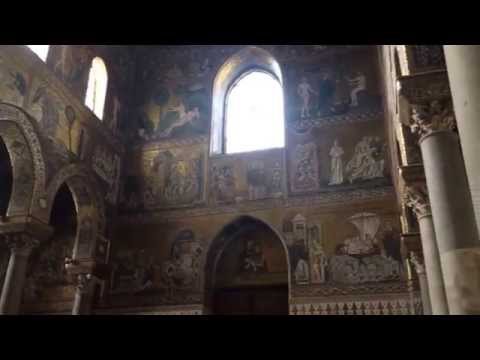
Watch this video on YouTube
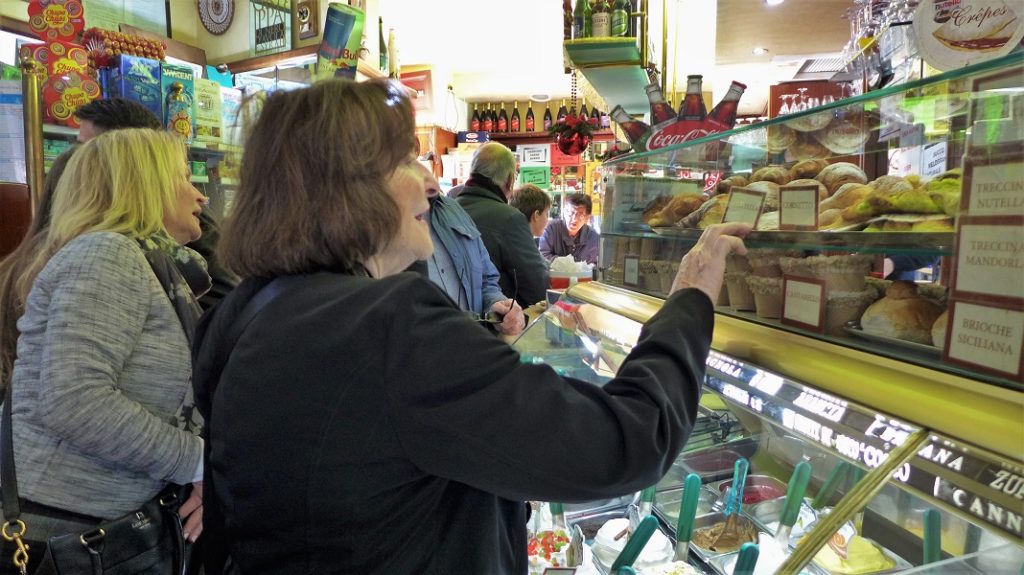

Sources
Updated 11 March 2023

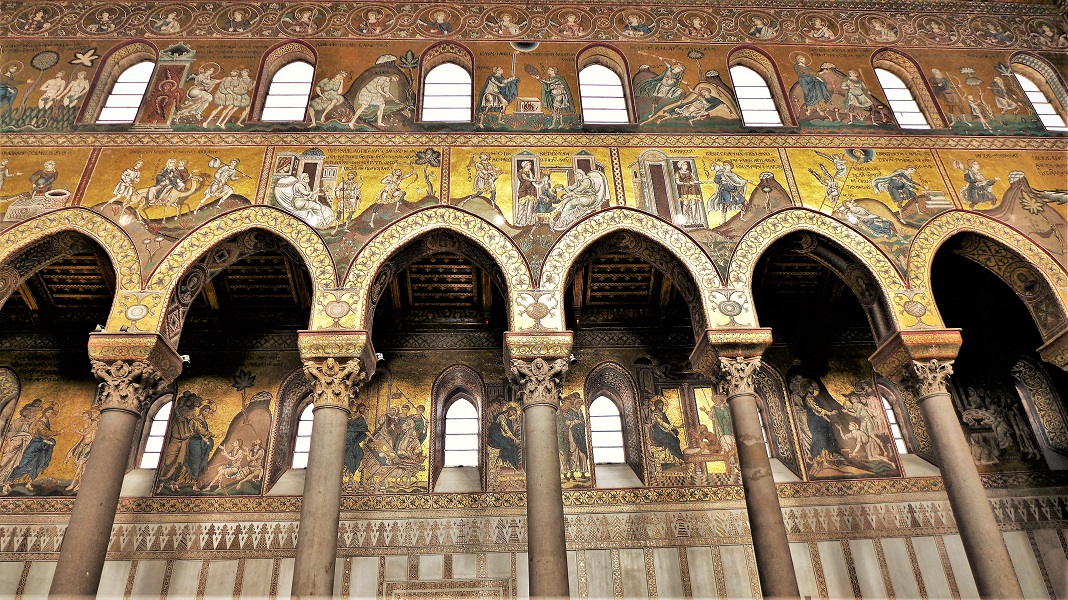





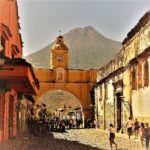






Pingback: East meets West | Sam, I am
I have a Porcelain plate that Says Italian Souvenir from this Cathedral. I was wondering if it is worth any money..